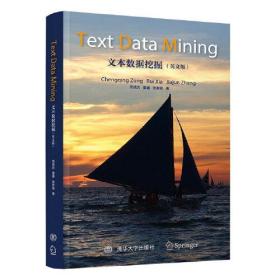
文本数据挖掘(英文版)
¥ 85.43 7.2折 ¥ 119 九五品
仅1件
河北廊坊
认证卖家担保交易快速发货售后保障
作者宗成庆;夏睿;张家俊
出版社清华大学出版社
出版时间2021-10
版次1
装帧其他
上书时间2024-10-12
- 在售商品 暂无
- 平均发货时间 12小时
- 好评率 暂无
- 最新上架
商品详情
- 品相描述:九五品
图书标准信息
- 作者 宗成庆;夏睿;张家俊
- 出版社 清华大学出版社
- 出版时间 2021-10
- 版次 1
- ISBN 9787302590293
- 定价 119.00元
- 装帧 其他
- 开本 16开
- 纸张 胶版纸
- 页数 351页
- 字数 100千字
- 【内容简介】
- 《Text data mining》 offers thorough and detailed introduction to the fundamental theories and methods of text data mining, ranging from pre-processing (for both Chinese and English texts), text representation, feature selection, to text classification and text clustering. Also it presents predominant applications of text data mining, for example, topic model, sentiment analysis and opinion mining, topic detection and tracking, information extraction, and text automatic summarization, etc.
- 【作者简介】
- Chengqing Zong is professor at the National Laboratory of Pattern Recognition (NLPR), Institute of Automation, Chinese Academy of Sciences. He serves as chairs for many prestigious conferences such as ACL-IJCNLP, IJCAI, IJCAI-ECAI, AAAI and COLING, etc., and served as associate editors for prestigious journals such as TALLIP, Machine Translation, etc. He is the President of Asian Federation on Natural Language Processing and a member of International Committee on Computational Linguistics.
- 【目录】
-
1 Introduction 1
1.1 The Basic Concepts 1
1.2 Main Tasks of Text Data Mining 3
1.3 Existing Challenges in Text Data Mining 6
1.4 Overview and Organization of This Book 9
1.5 Further Reading 12
2 Data Annotation and Preprocessing 15
2.1 Data Acquisition 15
2.2 Data Preprocessing 20
2.3 Data Annotation 22
2.4 Basic Tools of NLP 25
2.4.1 Tokenization and POS Tagging 25
2.4.2 Syntactic Parser 27
2.4.3 N-gram Language Model 29
2.5 Further Reading 30
3 Text Representation 33
3.1 Vector Space Model 33
3.1.1 Basic Concepts 33
3.1.2 Vector Space Construction 34
3.1.3 Text Length Normalization 36
3.1.4 Feature Engineering 37
3.1.5 Other Text Representation Methods 39
3.2 Distributed Representation of Words 40
3.2.1 Neural Network Language Model 41
3.2.2 C&W Model 45
3.2.3 CBOW and Skip-Gram Model 47
3.2.4 Noise Contrastive Estimation and Negative Sampling 49
3.2.5 Distributed Representation Based on the Hybrid
Character-Word Method 51
3.3 Distributed Representation of Phrases 53
3.3.1 Distributed Representation Based on the
Bag-of-Words Model 54
3.3.2 Distributed Representation Based on Autoencoder 54
3.4 Distributed Representation of Sentences 58
3.4.1 General Sentence Representation 59
3.4.2 Task-Oriented Sentence Representation 63
3.5 Distributed Representation of Documents 66
3.5.1 General Distributed Representation of Documents 67
3.5.2 Task-Oriented Distributed Representation
of Documents 69
3.6 Further Reading 72
4 Text Representation with Pretraining and Fine-Tuning 75
4.1 ELMo: Embeddings from Language Models 75
4.1.1 Pretraining Bidirectional LSTM Language Models 76
4.1.2 Contextualized ELMo Embeddings for
Downstream Tasks 77
4.2 GPT: Generative Pretraining 78
4.2.1 Transformer 78
4.2.2 Pretraining the Transformer Decoder 80
4.2.3 Fine-Tuning the Transformer Decoder 81
4.3 BERT: Bidirectional Encoder Representations
from Transformer 82
4.3.1 BERT: Pretraining 83
4.3.2 BERT: Fine-Tuning 86
4.3.3 XLNet: Generalized Autoregressive Pretraining 86
4.3.4 UniLM 89
4.4 Further Reading 90
5 Text Classi?cation 93
5.1 The Traditional Framework of Text Classi?cation 93
5.2 Feature Selection 95
5.2.1 Mutual Information 96
5.2.2 Information Gain 99
5.2.3 The Chi-Squared Test Method 100
5.2.4 Other Methods 101
5.3 Traditional Machine Learning Algorithms for Text
Classi?cation 102
5.3.1 Na?ve Bayes 103
5.3.2 Logistic/Softmax and Maximum Entropy 105
5.3.3 Support Vector Machine 107
5.3.4 Ensemble Methods 110
5.4 Deep Learning Methods ............................................. 111
5.4.1 Multilayer Feed-Forward Neural Network ................ 111
5.4.2 Convolutional Neural Network ............................ 113
5.4.3 Recurrent Neural Network ................................. 115
5.5 Evaluation of Text Classi?cation 120
5.6 Further Reading 123
6 Text Clustering 125
6.1 Text Similarity Measures 125
6.1.1 The Similarity Between Documents 125
6.1.2 The Similarity Between Clusters 128
6.2 Text Clustering Algorithms 129
6.2.1 K-Means Clustering 129
6.2.2 Single-Pass Clustering 133
6.2.3 Hierarchical Clustering 136
6.2.4 Density-Based Clustering 138
6.3 Evaluation of Clustering 141
6.3.1 External Criteria 141
6.3.2 Internal Criteria 142
6.4 Further Reading 143
7 Topic Model 145
7.1 The History of Topic Modeling. 145
7.2 Latent Semantic Analysis 146
7.2.1 Singular Value Decomposition of the
Term-by-Document Matrix 147
7.2.2 Conceptual Representation and Similarity
Computation 148
7.3 Probabilistic Latent Semantic Analysis 150
7.3.1 Model Hypothesis .......................................... 150
7.3.2 Parameter Learning ......................................... 151
7.4 Latent Dirichlet Allocation .......................................... 153
7.4.1 Model Hypothesis .......................................... 153
7.4.2 Joint Probability ............................................ 155
7.4.3 Inference in LDA ........................................... 158
7.4.4 Inference for New Documents ............................. 160
7.5 Further Reading 161
8 Sentiment Analysis and Opinion Mining 163
8.1 History of Sentiment Analysis and Opinion Mining 163
8.2 Categorization of Sentiment Analysis Tasks 164
8.2.1 Categorization According to Task Output 164
8.2.2 According to Analysis Granularity 165
8.3 Methods for Document/Sentence-Level Sentiment Analysis 168
8.3.1 Lexicon- and Rule-Based Methods 169
8.3.2 Traditional Machine Learning Methods 170
8.3.3 Deep Learning Methods 174
8.4 Word-Level Sentiment Analysis and Sentiment Lexicon
Construction 178
8.4.1 Knowledgebase-Based Methods 178
8.4.2 Corpus-Based Methods 179
8.4.3 Evaluation of Sentiment Lexicons 182
8.5 Aspect-Level Sentiment Analysis 183
8.5.1 Aspect Term Extraction .................................... 183
8.5.2 Aspect-Level Sentiment Classi?cation .................... 186
8.5.3 Generative Modeling of Topics and Sentiments .......... 191
8.6 Special Issues in Sentiment Analysis................................ 193
8.6.1 Sentiment Polarity Shift .................................... 193
8.6.2 Domain Adaptation ......................................... 195
8.7 Further Reading ...................................................... 198
9 Topic Detection and Tracking ............................................. 201
9.1 History of Topic Detection and Tracking ........................... 201
9.2 Terminology and Task De?nition.................................... 202
9.2.1 Terminology ................................................ 202
9.2.2 Task ......................................................... 203
9.3 Story/Topic Representation and Similarity Computation .......... 206
9.4 Topic Detection....................................................... 209
9.4.1 Online Topic Detection ..................................... 209
9.4.2 Retrospective Topic Detection ............................. 211
9.5 Topic Tracking........................................................ 212
9.6 Evaluation ............................................................ 213
9.7 Social Media Topic Detection and Tracking ........................ 215
9.7.1 Social Media Topic Detection.............................. 216
9.7.2 Social Media Topic Tracking .............................. 217
9.8 Bursty Topic Detection............................................... 217
9.8.1 Burst State Detection ....................................... 218
9.8.2 Document-Pivot Methods .................................. 221
9.8.3 Feature-Pivot Methods ..................................... 222
9.9 Further Reading ...................................................... 224
10 Information Extraction 227
10.1 Concepts and History 227
10.2 Named Entity Recognition 229
10.2.1 Rule-based Named Entity Recognition 230
10.2.2 Supervised Named Entity Recognition Method 231
10.2.3 Semisupervised Named Entity Recognition Method 239
10.2.4 Evaluation of Named Entity Recognition Methods 241
10.3 Entity Disambiguation ............................................... 242
10.3.1 Clustering-Based Entity Disambiguation Method ........ 243
10.3.2 Linking-Based Entity Disambiguation .................... 248
10.3.3 Evaluation of Entity Disambiguation .. . . . ................. 254
10.4 Relation Extraction ................................................... 256
10.4.1 Relation Classi?cation Using Discrete Features .......... 258
10.4.2 Relation Classi?cation Using Distributed Features ....... 265
10.4.3 Relation Classi?cation Based on Distant Supervision .. . . 268
10.4.4 Evaluation of Relation Classi?cation . ..................... 269
10.5 Event Extraction 270
10.5.1 Event Description Template................................ 270
10.5.2 Event Extraction Method ................................... 272
10.5.3 Evaluation of Event Extraction ............................ 281
10.6 Further Reading ...................................................... 281
11 Automatic Text Summarization 285
11.1 Main Tasks in Text Summarization 285
11.2 Extraction-Based Summarization 287
11.2.1 Sentence Importance Estimation 287
11.2.2 Constraint-Based Summarization Algorithms 298
11.3 Compression-Based Automatic Summarization 299
11.3.1 Sentence Compression Method 300
11.3.2 Automatic Summarization Based on Sentence
Compression 305
11.4 Abstractive Automatic Summarization 307
11.4.1 Abstractive Summarization Based on
Information Fusion 307
11.4.2 Abstractive Summarization Based on the
Encoder-Decoder Framework .............................. 313
11.5 Query-Based Automatic Summarization ............................ 316
11.5.1 Relevance Calculation Based on the Language Model . . . 317
11.5.2 Relevance Calculation Based on Keyword Co-occurrence .............................................. 317
11.5.3 Graph-Based Relevance Calculation Method ............. 318
11.6 Crosslingual and Multilingual Automatic Summarization ......... 319
11.6.1 Crosslingual Automatic Summarization .. . ................ 319
11.6.2 Multilingual Automatic Summarization .. . . ............... 323
11.7 Summary Quality Evaluation and Evaluation Workshops.......... 325
11.7.1 Summary Quality Evaluation Methods .................... 325
11.7.2 Evaluation Workshops...................................... 330
11.8 Further Reading ...................................................... 332
References 335
点击展开
点击收起
— 没有更多了 —


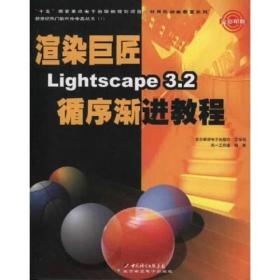
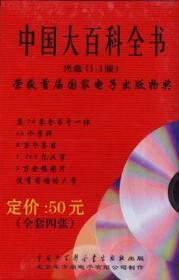

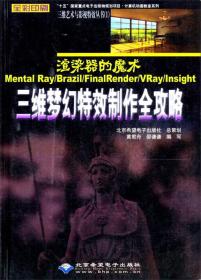
![人一生要去的55个地方[中国旅游手绘地图集]](https://www0.kfzimg.com/G06/M00/4A/65/p4YBAFqbwJyABUGbAADhXyizgic266_s.jpg)



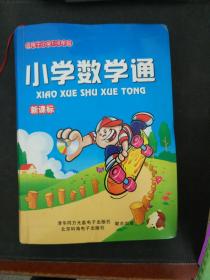

以下为对购买帮助不大的评价